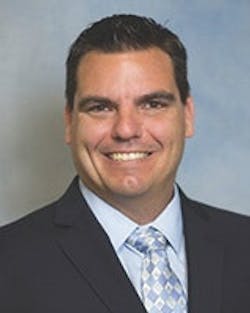Balancing Guest Count Growth With a Profitable Ticket Average.
It’s no big secret that guest counts at oil change facilities remain a challenge. Oil change intervals continue to grow, competition continues to increase and the number of miles driven by millennials continues to decrease. Because of this, more and more emphasis is placed on ticket average and supplemental revenue growth. It seems everywhere you turn, someone is churning out a new, expanded list of services. The days of a stand-alone drive through quick lube that focused solely on fluid maintenance, seem numbered. However, with these increased service offerings generally come more time spent in the service bay.
So what happens when a guest comes in for an oil change and ends up purchasing a brake job? How long does that car tie up an active service bay? In a typical tire shop that averages eight service bays, this is not a problem. But in a quick lube facility that has three or maybe even just two service bays, this presents a major challenge and, if left ignored, will be detrimental to the business. To be successful with this model, an operator needs to ensure they have well trained managers, technicians and, most importantly, efficient operations. Getting this wrong can expedite the demise of a location.
The purpose of this article isn’t to dissuade anyone from expanding their service offerings. In fact, I truly believe an expanded menu is the key to continued longevity of quick lube facilities. My purpose here is to provide readers with some alternative ways to increase ticket average without throwing a wrench in operations. I’d much rather see a service center provide service to 30 guests at an average ticket of $100 than to hear the manager boast of a 10 guest day with a $300 ticket average comprised of battery changes and brakes. Of course, it is all about balance.
There are several ways to boost ticket average and profitability without necessarily increasing service times. One of the best things I did for my business was implementing the concept of service packages. Many years ago, I learned the fine art of the “pop and pour” from my good friend Cricket Killingsworth. Cricket transformed me from a nonbeliever in fuel and engine treatments into a champion in the art of bundling. The idea of bundling a low-cost, high-profit fuel treatment and engine treatment into a standard oil change is difficult for some operators to grasp. I always relate it to McDonalds. What do you order when you pull up to the drive through? Typically, the answer is a No. 1, 2 or 3. Offering an oil change package is no different. Basic oil change: No. 1. Basic oil change with fuel treatment: No. 2. Basic oil change with fuel and engine treatment: No. 3. If your base price is $39.99 and your average oil change price ends up being $49.99 because of bundling, then you are dollars ahead without breaking a sweat.
Packaging also allows you to deploy a bargain strategy. Let’s just say you charge $20 for your engine treatment and $20 for your fuel treatment when purchased separately. If you add those two items to your basic oil change of $39.99, a consumer would pay $79.99. However, if you bundle those items together and offer them in a package, say No. 3 for $59.99, you can show the guest they are in fact saving $20 by buying that package. The best part, is you are providing the customer added value, increasing your ticket and profitability without adding additional labor.
There are other ways packaging can drive your ticket and profitability that are used by successful retailers and service providers. One of these concepts is often referred to as an anchor decoy. An anchor decoy is a product or service set at a very high price that you have no intention of selling. Think of it as a Ferrari oil change offered up to the driver of a Yugo. If you have no intention of selling it and you know no one is going to buy it, why offer it? Well, let’s say you offer it at $149.99 and it includes up to 12 quarts of synthetic oil, top of the line engine treatment and a synthetic fuel system cleaner. Then, you set your next best oil change at $99.99 and it includes up to seven quarts of synthetic oil, the engine treatment and synthetic fuel system cleaner. When compared to a $149.99 price point, all of a sudden the $99.99 service looks like a bargain.
Utilizing the anchor decoy has some other well intended side benefits. The first side benefit is catering to the driver that always gravitates to the highest priced service. There are always those customers who want to feel they are getting the best. This is often referred to as the exclusivity principle. Setting the rate of a service at a high price caters to those individuals. Of course, the vast majority of consumers gravitate to the middle. So, again, setting this high-priced anchor decoy sets a higher bar for the mid-level service. Imagine where your ticket and profitability might be if your current best service all of a sudden became your biggest seller? The reverse also holds true. Most consumers don’t want the cheapest option or value option when there are better alternatives for just a few dollars more. The task at hand is just explaining the added value that comes along with the premium price tag.
So if packaging and anchor decoys are of little interest to you, I offer you this last little retail trick some might find to be common sense, yet many don’t put it into practice. Recently, I was talking to one of my business friends. He was talking about trying to land a new fleet for his carwash. His normal price at the carwash is $14.99. He offered the fleet a carwash for $9.50. What’s wrong with this some might ask, including my business friend? There have been countless studies published showing that prices ending in the magic number nine, $9.99 or $9.49 as examples, actually boost sales. Another interesting tidbit is most consumers consider $9.99 and $9.49 the same just as they do $39.99 and $34.99. If you currently have any prices that don’t end in $X.99 or $X9.99, try raising them to the next $X9.99 and see what happens to your sales and profitability.
Getting back to my original point, striking a balance between guest count and ticket average is obviously challenging. There may be times when you need to focus on service times rather than time-consuming services or repairs. In those instances, consider the use of packages to help maintain your ticket and profitability without sacrificing guest counts. If you get your service writers’ accustomed to offering packages every day to every guest, you will also see your ticket average and profitability soar as you add those additional services when time permits.
About the Author

